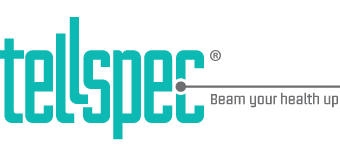Artificial Colours Part 2
The food industry has a long history with food dyes, both synthetic and nature-derived. They are widely used because humans eat with their eyes. It’s important, however, to question and evaluate the safety of these synthetic food dyes. There are examples of food dyes widely used for years, then banned due to negative health effects, such as Orange 1. Today TellSpec is sharing the research on six synthetic food dyes possibly present in your food; with the exception of Orange 1, these are dyes that are currently approved as safe for use in noted nations.

Tartrazine is a synthetic yellow dye. Permitted in US, carries a warning in the UK and EU due to its effects seen in children. Frequently associated with food intolerance, linked to hyperactivity, aggression, irritability in children. Can act as hormonal disruptor by activating human estrogen receptors. Contains benzidene, a human carcinogen. Found in: soft drinks, pasta, chips, popcorn, candy, sauces.
Other names: FD&C Yellow 5, E102, C.I. 19140, Acid Yellow 23, Food Yellow 4

Sunset Yellow FCF is a synthetic, yellow azo dye derived from petroleum. Voluntarily removed from food in the UK following consumer pressure. Considered safe in low amounts. Elevated intake in animals associated with enlargement of gastrointestinal and reproductive organs and diarrhea. Contains benzidene, a human carcinogen. Found in: cheeses, confectionery, marmalades, jams, baked goods, instant noodles, soft drinks, lemon gelatin, cake decorations.
Other names: Orange Yellow S, FD&C Yellow 6, C.I. 15985, E110

Quinoline yellow is a synthetic, green-yellow dye. Banned in US, Australia, Norway. Voluntarily removed from food in UK following consumer pressure. EU permits it but lowered allowable intake by 20-fold in 2009. In combination with sodium benzoate (common preservative, particularly in soft drinks), associated with hyperactivity in children. Reports of rashes and allergic reactions common. In animal studies with very high intake, has effects on white blood cell count and weight during pregnancy. Found in: soft drinks, jellies, caramels, processed seafood, caviar, liquors, juices, candies.
Other names: Quinoline Yellow WS, Food Yellow 13, D&C Yellow No. 10, Acid yellow 3, Quinidine Yellow KT, Japan Yellow 203, Lemon Yellow ZN 3, C.I. 47005

Fast Green FCF is a synthetic green dye. Banned from use in the EU; permitted in the US, though it is the least used food dye. In high doses in animals, associated with various cancers, impaired bone marrow function, changes in composition of blood. In cell-based studies, causes changes to chromosomes of DNA and interferes with function of neurons of the brain. Found in: sports drinks, sauces and dips, chewing gum, processed vegetables.
Other names: Food green 3, FD&C Green No. 3, E143, Green 1724, Solid Green FCF, and C.I. 42053

Brilliant Blue FCF is a synthetic, blue dye derived from petroleum. Long-term toxicity studies in animals have found it safe. At site of injection in rats, cancerous growths seen. Recently associated with negative health effects when given to patients in compromised health, particularly when given via feeding tube to hospital patients. FDA endorses its removal from healthcare settings. Found in: ice cream, liqueurs, popsicles, canned vegetables, candies, dairy products.
Other names: FD&C Blue No.1, Acid Blue 9, D&C Blue No. 4, Alzen Food Blue No. 1, Atracid, Blue FG, Erioglaucine, Eriosky blue, Patent Blue AR, Xylene Blue VSG, C.I. 42090

Indigotine is a synthetic, blue dye derived from coal tar. Approved for use in US and EU. In studies of rats, injection of high dose over an extended period of time impaired growth, caused cancerous growths, and in some animals caused immediate convulsive death. In pigs, altered blood composition and impaired liver function. Found in: cheeses, yogurt, frozen desserts, fruit purees and fillings, processed seafood.
Other names: FD&C Blue No. 2, Indigo carmine, E132, 5,5′-indigodisulfonic acid sodium salt



